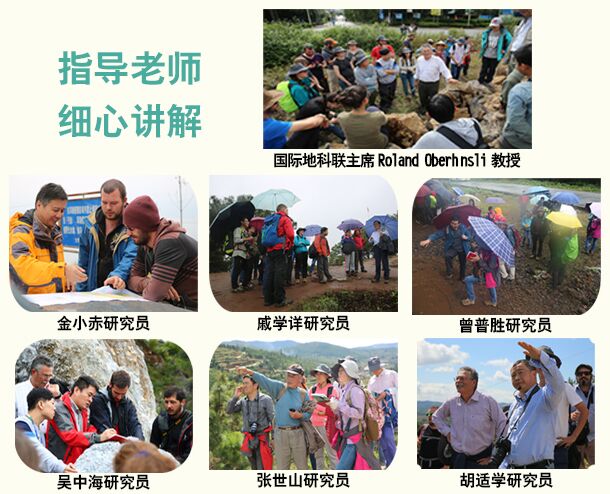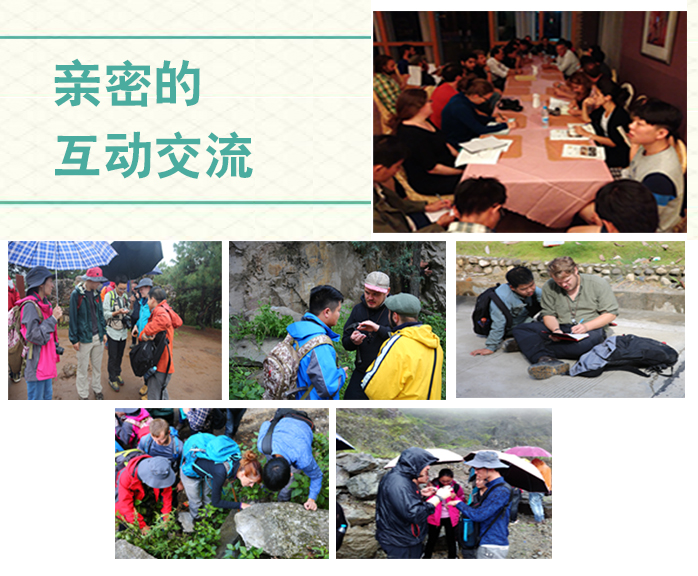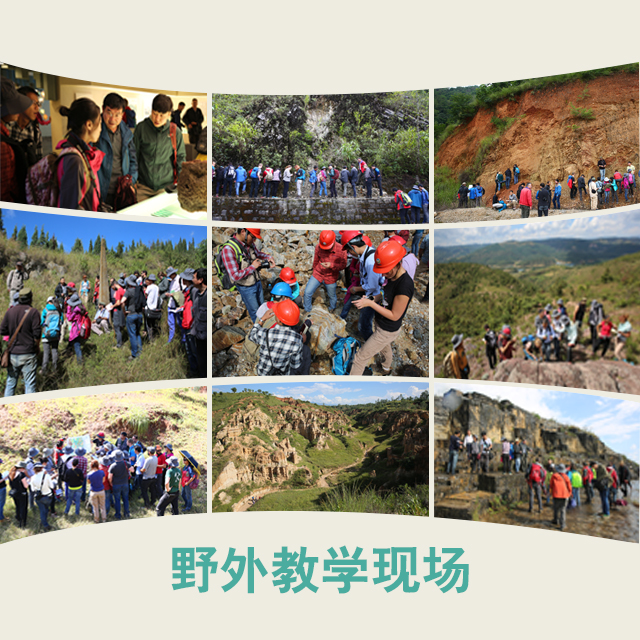Graduate Students from CAGS and University of Potsdam Embark on a Joint Field Course in Yunnan
In accordance with “the Agreement of Cooperation between Chinese Academy of Geological Sciences and University of Potsdam”, a joint field course bringing together over 40 teachers and graduate students from the two institutions was successfully organized in Yunnan, China on October 8-20 2015.
The 13-day field course started from
Tengchong, Baoshan and Dali in western Yunnan and ended in Kunming and Luoping
in eastern Yunnan, crossing a number of tectonic units along the route,
including the Tengchong Block, Baoshan Block, Lanping-Simao Block, the western
margin of the Yangtze Block, and the western end of South China Fold Belt. The
field course involved multidisciplinary geoscience knowledge, including volcanic
petrology, neotectonics and active tectonics, regional tectonics, sedimentary
rocks and metamorphic rocks, ductile shear deformation, magma and sedimentary
mineralization, vertebrate fauna, paleontology etc.
A team of multidisciplinary and high-level teachers was formed to give indoor
and on-site lectures during the field course, including Prof. Zeng Pusheng (mineralogy-petrology-economic
geology) from the National Research Center for Geoanalysis, Prof. Wu Zhonghai
(structural geology) from the Institute of Geomechanics, Prof. Jin Xiaochi
(tectonics and paleontology) and Prof. Qi Xuexiang (tectonics and
mineralization) from the Institute of Geology. Besides, several other teachers
outside of CAGS were specially invited to give lectures for part of the field
course, including Prof. He Zhonghua, Deputy Chief Geologist from Yunnan Gold
Mining Group, Prof. Xue Shunrong from the Geological Survey of Yunnan Province,
Prof. Zhang Shishan and Prof. Liang Yongzhong from Yunnan Phosphate Chemical
Group and Prof. Hu Shixue from the Chengdu Center, China Geological Survey.
The field course in Tengchong focused on
Quaternary bimodal volcanic rocks and related geothermal activities as well as
their neotectonic genesis and deep environment. Extensive discussions were
conducted on vesicular structure of basalts, conditions and genesis of columnar
joints, neotectonic deformational characteristics and models of the Tengchong
Block.
The field course along the route from Tengchong, Baoshan to Dali focused on
metamorphic rocks and ductile shear zones of the Gaoligong Mountains, Jurassic
basalt stratigraphic section on the western margin of the Baoshan Block, Pliocene
barrier lake sediments and Quaternary terrace of the Nujiang Valley,
neotectonic landforms of the Baoshan Basin, and metamorphic rocks of Chongshan
Group in Lancanjiang Suture Zone. Discussions were carried out on the evolution
and related volcanism of the western wing of the Baoshan Block and Lancangjiang
Suture Zone.
Students visited during the field course in Dali the normal faults of the front Diancangshan Mountain and the Quaternary faulted basin of the Erhai Lake, typical sedimentary sections and fold deformational characteristics of the metamorphic base and sedimentary cover on the western margin of the Yangtze Block, including Ordovician-Permian sandstone, shale, dolomite and basalt etc., mineralization of skarn-porphyry gold polymetallic deposits in Beiya Village, Heqing County. Discussions were extensively conducted surrounding the topics including the relationship between Diancangshan active tectonic deformation and strike-slip movements of the Red River Fault Zone, geological evolution and Permian large igneous provinces on the western margin of the Yangtze Block, and geological background of mineralization and mining prospects of the Beiya gold mine.
The field course in the surrounding areas of Kunming focused on the characteristics and regional tectonics of the Xiaojiang Fault activities, sedimentary strata in early Pleistocene Yuanmou Formation and Pliocene Gantang Formation of the Yuanmou Basin and related earth forest landscape, geo-environmental conditions and characteristics of Pliocene Australopithecus and early Pleistocene Yuanmouensis fossils, stratotype section for Cambrian boundary at Meishucun, characteristics of Chengjiang fauna representing “Cambrian Explosion”, and Sinian-Cambrian section with complete sedimentary records at Wangjiawan. Discussions were conducted on sedimentary characteristics of unconformity interface between Nanhua System (Cryogenian) and Mesoproterozoic, and sedimentary characteristics of tillite and environmental characteristics of phosphate strata in Nanhua System. On-site discussions were organized among the teachers and students on current movement characteristics and related seismic activities of the Xiaojiang Fault Zone, and environmental conditions for genesis of Yuanmou earth forests.
In Luoping, the students visited Mid-Triassic Luoping biota strata as well as animal and plant specimens, learned the biotic recovery process in Triassic after the mass extinction in Permian, depositional environmental characteristics, evolutional process of animals and plants, and conducted discussions on climate and environment change during biotic recovery.
The organization of the joint field course not only promoted the exchanges between Chinese and German students in geosciences, but also deepened their understanding of each other’s different cultures. Through almost two weeks of field course, sincere and strong friendship was nurtured and cemented, which are believed to be the source and foundation of in-depth cooperation between the two sides in the future.
In July 2013, “the Agreement of Cooperation between Chinese Academy of Geological Sciences and University of Potsdam” was signed to promote bilateral cooperation in geoscience research and education. Following its signing, 7 postgraduate students participated in the field course organized by the Potsdam University to the Alps and southern France in 2013.




